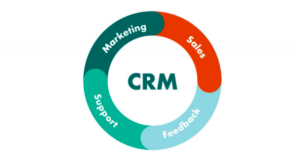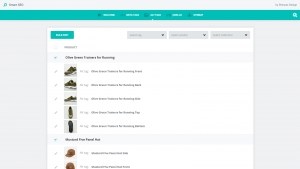Mr. Stevens and I just reached fully vaccinated status and the realities of our post-pandemic work differences are stark. He works in manufacturing and the vast majority of his employees have been in person throughout the pandemic. Anyone who could function remotely was asked to stay home, but “going back” is expected as soon as it’s safe to do so. He might work from home a bit more, but he expects, and I think relieved, to be back at the office.
Meanwhile, Team WeSpire is still fully remote and officially staying that way until September. But, I don’t expect it to be like it was before and my sense is that many leaders of organizations capable of being fully remote feel similarly. As a result, I’ve been reading a lot about hybrid work environments. I’ve realized that whatever we do, it’s going to be a bigger leadership challenge than going fully remote turned out to be.
Psychological Safety and Hybrid Work
One piece that reinforced this was from Amy Edmonson of the Harvard Business School, who weighed in on the psychological safety aspect of hybrid work. WeSpire’s inclusive culture work is heavily influenced by Edmondson. This is largely because we find psychological safety, the belief that you can speak up at work without fear of punishment or embarrassment, to be critical to inclusivity and belonging. Google found it was the key to high performing teams. So if you focus on psychological safety, you improve performance and equity.
Psychological Safety Takes Time to Build and Can Be Destroyed in an Instant
Edmondson reminds us that it takes time to build safety. It can also be destroyed in an instant, often by perhaps well-intentioned, but poorly phrased comments. In a hybrid environment that we aren’t used to, these little cuts could become rampant. A comment like “We miss having you here with us in the office now that so many more people are here” doesn’t consider that this person isn’t back yet due to undisclosed personal or family health issues, ongoing child care disruptions, or even vaccine hesitancy. It suggests that the office is the only truly acceptable place to be.
What Edmonson highlights is that pre-pandemic, many work-life issues were “high-risk” topics to discuss with employees. One of the silver linings of the pandemic is that everyone’s work and personal life collided. We had to get real with each other. But, to expect people to disclose these details forever may be unrealistic. As she advises,
“managers must create an environment that encourages employees to share aspects of their personal situations as relevant to their work scheduling or location and/or to trust employees to make the right choices for themselves and their families, balanced against the needs of their teams.”
She then provides a helpful five step process for managers to follow to create psychological safety in a hybrid environment.
Is “Hybrid” Part of the Problem?
Reading the piece, it made me consider how we use the word “hybrid” might actually be part of the problem. It most often suggests a “here” and a “there” and sets up WFH and the office as competing forces.
Some companies are announcing a “work from anywhere” policy, but retaining space for conversations or those who need it. To me, that is the ultimate signaling that a company is committed to ensuring their teams and culture function well, no matter where people happen to be working from that day – home, a coffee shop, the road, or yes, a desk in a central convening location aka “the office”. It signals trust. It signals flexibility. And It significantly reduces the presumption that the office is where you have to be everyday. It’s not the right model for many businesses, but it might be the right mental framework for anyone seriously contemplating “hybrid”.
Leaders still have to walk the talk, and work from anywhere themselves, or unwritten power dynamics start to prevail. Teams and groups need to make the vast majority of meetings virtual. Alternatively, give plenty of notice and fund travel if they aren’t. Infrastructure needs to support a distributed first approach. Leaders need to be watchdogs for innocent comments that inadvertently suggest that a certain somewhere is preferable to anywhere.
We are all slowly emerging from our cocoons and to quote one of our clients, still figuring out what kind of beautiful butterfly we will be. No matter what our work environment becomes, I hope we can all agree that our priority is to keep each other safe, physically and psychologically.
Quote of the Week: “The best way to find out if you can trust somebody is to trust them.”
Ernest Hemingway
Business & Finance Articles on Business 2 Community
(51)
Report Post




